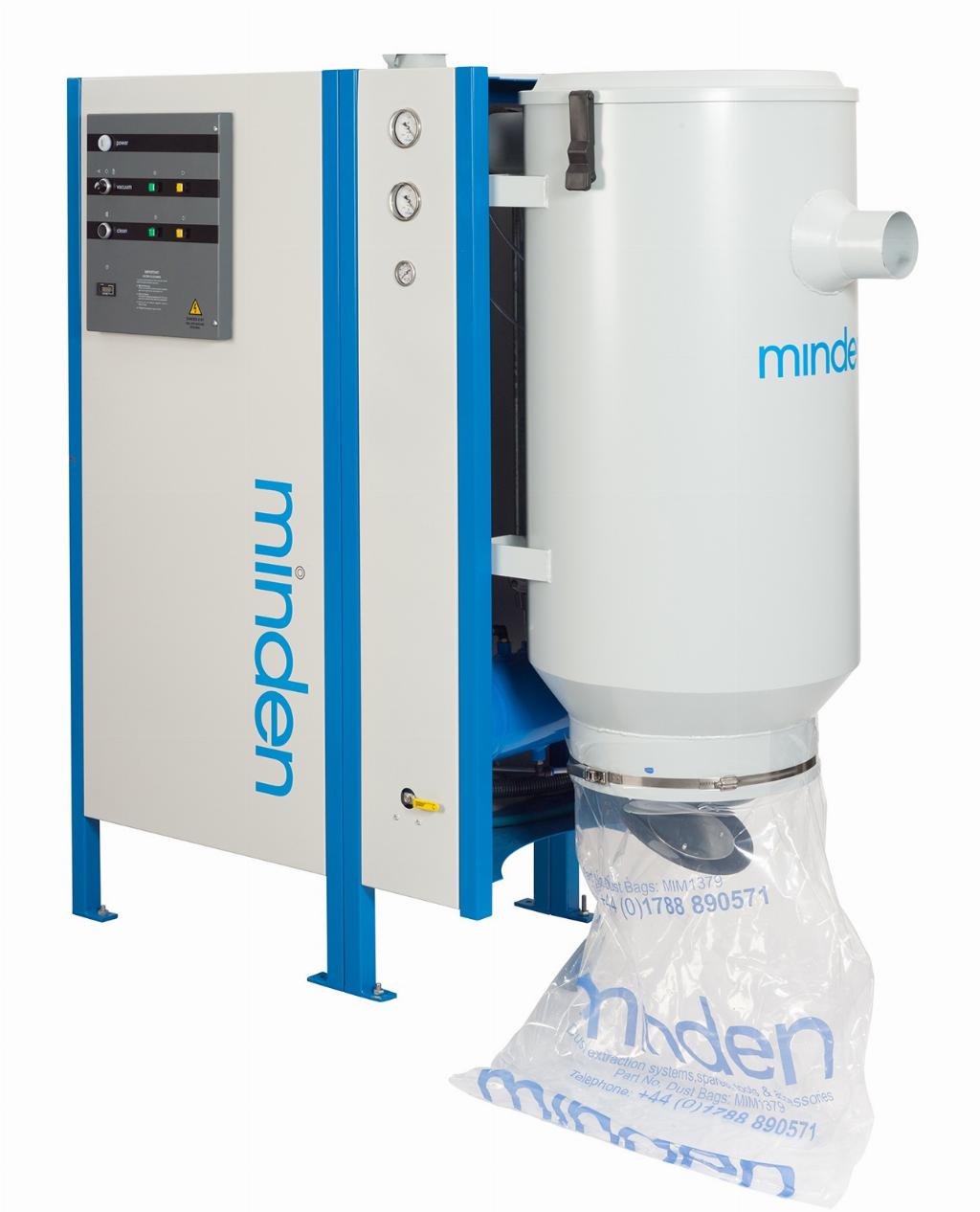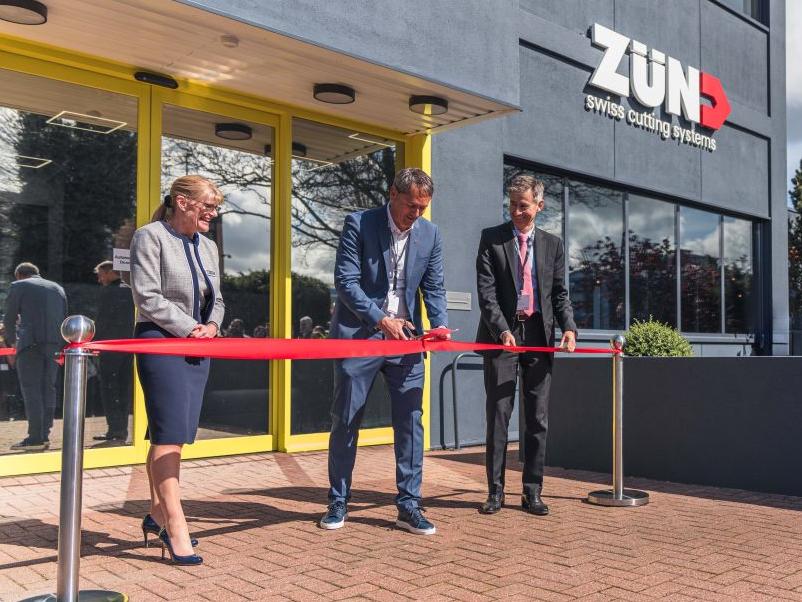Don’t sweep your dust issue under the carpet

Les Brooker, managing director of Minden Systems, thinks too many businesses working with composites are ignoring the potential dangers posed by dust created during commonplace manufacturing processes.
Type in the words ‘COSHH’ and ‘engineering’ into Google and the top search result is a document from the Health and Safety Executive (HSE) dated September 2020. Delve deeper and you’ll see that the number one problem they highlight for manufacturers is dust. It’s no accident, that in their hierarchy of substances hazardous to health, top of the HSE’s hit list are ‘dusts from mechanical cutting, shaping and abrasive blasting’. We might prefer to sweep the issue under the carpet, but dust is an insidious problem that just won’t go away.

Any engineering firm working with composites is very likely to be producing potentially hazardous dust from the cutting, sanding, trimming, filing and paint finishing from such material. So, for the industry as a whole – be it the auto body repair shop or the high precision printing bureau serving the aerospace sector – there’s a requirement to keep the shopfloor clean. More importantly, there’s a legal requirement to protect employees from harmful dust inhalation. It’s often all too easy to overlook dust management in the initial stages of a new facility development, but we know that the HSE takes the spectre of acquired lung disease very seriously. The fact that its most recent paper on COSHH highlights dust so prominently certainly backs up this assertion.
There’s also insurance to consider. Many more progressive insurance companies consider the business’s overall approach to staff welfare and certainly look favourably upon those companies that provide proven and effective dust extraction systems within the working environment. Conversely, poor dust control could push up insurance costs or even invalidate cover.
So, whether you’re a body shop, high-end bureau or workshop within a major OEM, the challenge of managing dust from composites needs to be addressed. The key question is how?
Two distinct options
In my experience, whether you’re a new start-up, well-established or growing business, you’re faced with two distinct options when it comes to dust extraction: either a small portable unit or a centralised system.
I am ‘system agnostic’ when it comes to extraction – we supply both portable and centralised systems. However, I would point out that I see too many businesses opting for the cheaper, entry level portable option only to regret this decision later on. I’ll explain more in a moment.
In my opinion a manufacturing operation of any size – or one that is planning to expand – should be looking at the centralised solution. It’s easy to think you’re making savings by opting for the cheaper portable options, but for a number of reasons, this thinking is usually flawed.
Portable possibilities
Having established Minden Systems as a provider to UK body shops back in the 90s, I appreciate the attraction of small, portable dust extraction units. Let’s face it, at first glance they seem to be the obvious solution. Highly portable (so they can be moved from one workstation to another within minutes) these machines are also low cost, retailing for around £1,000 per unit.

However, the pluses of portable dust extraction stop there. In practice, they don’t operate nearly as effectively as their centralised bigger brother, they require frequent filter maintenance and replacement to operate properly and often end up spreading as much dust around the workplace than taking it out. These machines operate on the principle of drawing air in at one end, filtering out the impurities (using a HEPA filter is a preferred option) and then blowing the ‘clean’ air back into circulation. In practice, this rarely works as these low-cost units are generally fitted with entry-level filters, which need to be regularly cleaned (time) or changed (cost).
Portable units (typically powered by single phase units) are also notoriously noisy – thus creating a poor work environment. Trailing power cables are another potential danger due to trip hazards.
If you operate a small lab or workshop using just a couple of mobile units, this is justifiable. Otherwise, I highly recommend your business makes serious consideration of a centralised extraction system, especially if you’re involved in the development of a new manufacturing unit or even an extension to existing operations.
Centralised solutions
A centralised, integrated dust extraction system starts at approximately £5,000, moving up to £40,000 investment for a total factory solution. But this additional cost brings genuine, tangible benefits – especially when on-tool extraction is employed. This is really the gold standard where dust extractions is concerned, taking away between 80 and 90% of all dust, before it even reaches the ambient air conditioning system.
A mistake manufacturers sometimes make is assuming that standard or enhanced air-filter systems can cope with composite dust. It can’t. If you don’t take away dust from processes at source, you run the risk of clogging up your secondary filtration system.
More enlightened manufacturers see dust extraction as the ‘third service provider’ alongside power and air, integrating all three resources into their building’s infrastructure.
A centralised system is run on three-phase motors and is usually stored away in a plant room, taking away noise and dust away from the working area. This approach also creates space for more workstations as there are no bulky units needed next to operators.
Another advantage of centralised is maintenance. While portables require constant attention in terms of monitoring performance and changing filters, this all takes time, which is costly. Centralised systems on the other hand are maintained once a year and benefit from self-cleaning filters which do not require constant checking and cleaning. While some newer portables do profess to use self-cleaning filters in our experience these are nowhere near as effective as those used on centralised systems.
Too often, dust is seen as an ‘add-on’ to a new build factory and this can cause real issues further down the line. The other day I visited a major manufacturer in the Midlands where they had a brand new facility being built – but had not even considered on-tool extraction. There’s a major education process that still needs to take place within the composites industry; and it’s not just the SMEs that need to improve their understanding of dust management, it’s the major OEMs too.
If you create dust as a fabricator or manufacturer or composites, you have a duty of care to deal with it. Don’t assume your existing air-conditioning system can cope. Specifying low-cost mobile units usually transpires as a false economy. Take professional advice early if you’re planning a new factory or development. Get dust management right and your staff, shareholders and customers will thank you for it. Get it wrong and you could face onerous HSE inspections, fines and possibly insurance claims from former employees.
Minden offers the industry its considerable experience gained over 35 years and more than 1,000 units installed to date, free of charge in any project you may be considering. All Minden products are manufactured in the UK at its Daventry facility.









